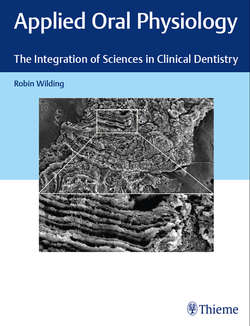Читать книгу Applied Oral Physiology - Robin Wilding - Страница 29
На сайте Литреса книга снята с продажи.
2.3.5 Regeneration after Pulpal Exposure
ОглавлениеA breach in the dentin, which causes exposure of the pulp, may be repaired by a bridge of new dentin provided that the pulp was not inflamed, the exposure was surgical and not carious, and that suitable stimulation was given to the pulpal cells. The stimulation which has been widely used is calcium hydroxide; a more recent material, mineral trioxide aggregate (MTA) has also proved to be successful. The calcium hydroxide is applied as a paste, which applied to the pulpal exposure causes local necrosis and a bridge of scar tissue to form. Calcium is deposited into the scar tissue, and this is followed by the secretion of dentin against the calcified bridge by odontoblasts. The degree of inflammation, the time of irritation and infection, and the location of the exposure must be regarded as decisive factors for the healing of the inflamed pulp rather than the effect of calcium hydroxide as such.7 This conclusion indicates that the use of calcium hydroxide to induce bridge formation in a carious exposure will have to be a carefully considered clinical decision. Unfortunately, the degree of inflammation of the pulp is difficult to assess as there is a poor correlation between signs and symptoms and the histological state of the pulp. If the pulp tissue stops bleeding without the presence of a blood clot, it does suggest that the hyperemia associated with inflammation is not advanced. The rapid formation of a clot may indicate that a dentin bridge could not form under any circumstances. In view of the considerable time required to perform endodontic treatment on a molar tooth, the possibility of inducing a dentin bridge after removing infected dentin and pulp tissue should be considered (see Chapter 5.3.3 Healing of a Pulp Exposure).
